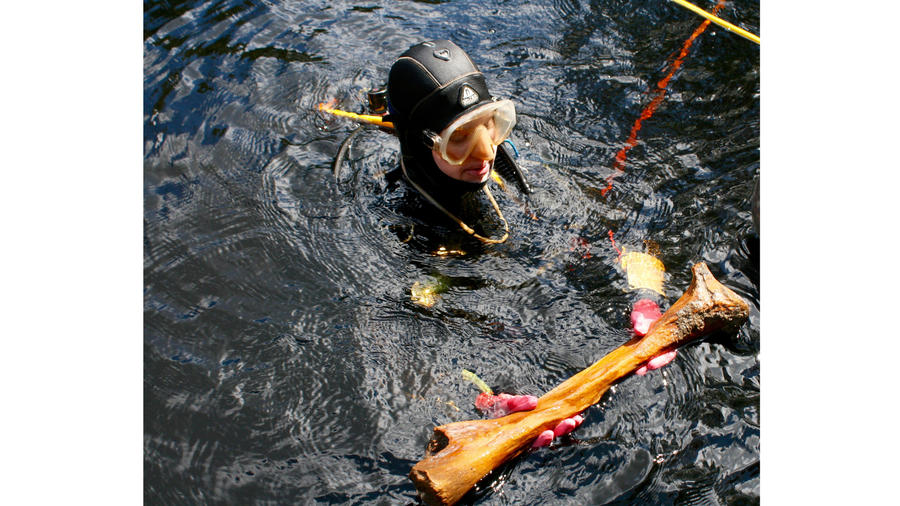
Neil Puckett, a Ph.D. student from Texas A&M; University involved in the excavations, surfaces with the limb bone of a juvenile mastodon. (Brendan Fenerty)
Archaeological finds in a sink hole in Florida have been determined to be from a period of time some 14,500 years ago, a thousand years earlier that it had been previously thought people had come to the Americas, according to The Christian Science Monitor.
The artifacts, including stone tools and mastodon bones with distinct cut marks, were actually discovered beneath 30 feet of water by a diver in the 1980s, but scientists at the time dismissed the findings since they thought the first Americans could not have entered the area before 13,500 years ago. Their reasoning was massive ice sheets covered much of North America, and humans traversing from Siberia across a land bridge were stranded in the Alaska area for quite a while, since no route to the south was available.
Around 13,500 years past, the ice began to melt, leaving a corridor through which the Clovis people, considered the first Americans, spread across the country. These findings show that humans were in the Florida area more than a thousand years before the ice melted.
Jon Erlandson, an archeologist and director of the Museum of Natural and Cultural History at the University of Oregon, said when the Clovis theory was on top, the scientists had it all figured out. But now, he says, the Clovis-first model is “dead in the water,” thanks to the Florida find as well as other finds in North and South America and new genetic data. Erlandson, who was not involved with the Florida excavation, says the climate today is more accepting of people believing there were humans here before Clovis.
The site was first discovered by a US Navy Seal, Buddy Page, while diving in the Aucilla River. The site was named Page-Ladson, after the diver and the owner of the property where the site was located.
The findings at the site seem to also suggest that humans and mastodons lived together for longer than previously thought, with the giant beasts becoming extinct some 2,000 years later. Many think the humans hunted the mastodons into extinction, but some think it may have been a number of factors, including human predation and climate change.
The researchers say they are not even sure if the mastodon bone with the cut marks was actually killed by the early humans, since they found no spear points or other indicators of a kill. The humans may have just been the beneficiaries of finding an already dead mastodon carcass on which to feed.
The new findings from the site have been published in the journal Science Advances.

Leave a Reply